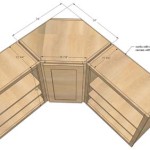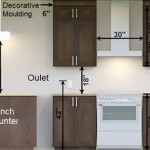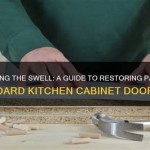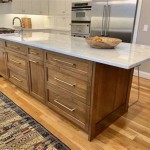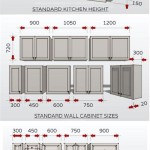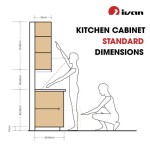Replacement Kitchen Cabinet Hardware: A Comprehensive Guide
Kitchen cabinet hardware, often overlooked, plays a crucial role in both the functionality and aesthetics of a kitchen. Replacing existing hardware is a cost-effective way to update the look of a kitchen without undergoing a full remodel. This article provides a comprehensive guide to understanding the world of replacement kitchen cabinet hardware, covering styles, materials, installation, and factors to consider before making a purchase.
Understanding the Types of Kitchen Cabinet Hardware
Kitchen cabinet hardware encompasses a variety of components, each serving a specific purpose. The main types include knobs, pulls, hinges, and latches. Each type offers a range of styles and functionalities which must be considered when replacing or upgrading.
Knobs: Knobs are typically single-point attachments, making them easy to install and replace. They come in numerous shapes, sizes, and materials, from simple round designs to more ornate and decorative options. Knobs are generally suited for smaller cabinets and drawers, offering a minimalist aesthetic.
Pulls: Pulls, also known as handles, are attached with two or more screws, providing a more substantial grip. They are available in a variety of lengths and styles, including bar pulls, arch pulls, and cup pulls. Pulls are often preferred for larger cabinets and drawers, offering easier access and a more contemporary look.
Hinges: Hinges are essential for allowing cabinet doors to swing open and closed smoothly. There are various types of hinges, including concealed hinges, which are hidden from view, and exposed hinges, which add a decorative element. The choice of hinge depends on the cabinet design and desired functionality.
Latches: Latches are used to keep cabinet doors securely closed. Magnetic latches are a popular choice for their ease of use and low profile. Other types of latches include roller latches and touch latches, each offering different levels of security and functionality.
Factors to Consider When Selecting Replacement Hardware
Choosing the right replacement kitchen cabinet hardware involves careful consideration of several factors, including style, material, size, and finish. Balancing these factors ensures that the new hardware complements the existing kitchen décor and provides optimal functionality.
Style: The style of the hardware should align with the overall aesthetic of the kitchen. For a traditional kitchen, classic knobs and pulls with ornate details may be appropriate. A modern kitchen may benefit from sleek, minimalist hardware with clean lines. Transitional styles can blend elements of both traditional and modern designs to create a balanced look.
Material: The material of the hardware affects its durability, appearance, and price. Common materials include brass, stainless steel, nickel, bronze, and ceramic. Brass offers a classic, warm look, while stainless steel provides a modern, durable option. Nickel is resistant to corrosion and offers a bright, elegant finish. Bronze adds a rustic, antique feel. Ceramic knobs and pulls can add a touch of color and personality to the kitchen.
Size: The size of the hardware should be proportional to the size of the cabinets and drawers. Small knobs may look out of place on large cabinets, while oversized pulls may overwhelm smaller drawers. Measuring the existing hardware and the available space is crucial for selecting the appropriate size. For pulls, the center-to-center measurement, which is the distance between the screw holes, is particularly important to ensure a proper fit.
Finish: The finish of the hardware affects its appearance and durability. Common finishes include polished chrome, brushed nickel, oil-rubbed bronze, and matte black. Polished chrome offers a bright, reflective finish, while brushed nickel provides a softer, more muted look. Oil-rubbed bronze adds a warm, antique feel, and matte black offers a modern, sophisticated look. The finish should complement other elements in the kitchen, such as the faucet, lighting fixtures, and appliances.
Cabinet Door Style: The style of cabinet door will influence the best hardware choices. Flat front cabinets can accommodate a wide range of hardware styles, whereas raised panel doors may look better with more traditional knobs or pulls. Inset doors may require specific hinge types that allow them to sit flush within the frame.
Ergonomics and Accessibility: Consider the ergonomics of the hardware, especially for those with limited mobility. Larger pulls are generally easier to grip than small knobs. The placement of the hardware should also be considered to ensure easy access to cabinets and drawers.
The Installation Process: A Step-by-Step Guide
Replacing kitchen cabinet hardware is a relatively simple DIY project that can be completed with basic tools and a few simple steps. Proper installation ensures that the hardware is securely attached and functions correctly.
Tools and Materials: Before starting the installation, gather the necessary tools and materials. These typically include a screwdriver (both Phillips head and flathead), a drill with appropriate drill bits, a measuring tape, a pencil, and safety glasses. A cabinet hardware jig can be helpful for ensuring consistent placement of the hardware.
Removing Existing Hardware: Begin by removing the existing hardware. Use a screwdriver to loosen and remove the screws holding the knobs or pulls in place. For hinges, carefully remove the screws attaching the hinge to the cabinet door and frame. Be sure to keep the old screws in a safe place, as they may be needed later.
Measuring and Marking: If replacing pulls with a different center-to-center measurement, measure and mark the new hole locations. Use a measuring tape and pencil to mark the exact spot for each screw hole. A cabinet hardware jig can be used to ensure accurate and consistent placement of the marks.
Drilling New Holes (If Necessary): If the new hardware requires different hole locations, drill new pilot holes at the marked locations. Use a drill bit that is slightly smaller than the diameter of the screws. Drill slowly and carefully to avoid damaging the cabinet doors or drawer fronts. Existing holes might need to be filled with wood filler and sanded smooth before drilling new ones, especially if the old hardware left visible damage.
Installing the New Hardware: Align the new hardware with the pre-drilled holes and insert the screws. Tighten the screws until the hardware is securely attached, but avoid over-tightening, which can strip the screws or damage the cabinet. For hinges, align the hinge with the cabinet door and frame and attach it with the screws. Ensure that the door swings smoothly and freely.
Testing and Adjusting: After installing all the hardware, test each cabinet door and drawer to ensure that they open and close smoothly. Adjust the hinges or latches as needed to achieve proper alignment. If any screws are loose, tighten them carefully.
Safety Precautions: When working with power tools, always wear safety glasses to protect your eyes. Be careful when drilling to avoid hitting any electrical wires or plumbing pipes behind the cabinet walls. If you are unsure about any step of the installation process, consult a professional.
Filling Old Holes: If the new hardware doesn’t align with existing holes, it's essential to fill these holes for a clean and professional look. Use wood filler or putty to fill the holes until they are flush with the surface. Let the filler dry completely according to the manufacturer’s instructions, and then sand the area smooth before painting or staining to match the cabinet finish.
Cost Considerations and Budgeting
The cost of replacement kitchen cabinet hardware can vary significantly depending on the style, material, and brand. Setting a budget and researching different options can help ensure that you find hardware that meets your needs without breaking the bank.
Factors Affecting Cost: The cost of hardware is influenced by several factors, including the material, finish, and complexity of the design. High-end materials like solid brass and stainless steel tend to be more expensive than cheaper alternatives like zinc alloy. Intricate designs and custom finishes also add to the cost. Brand reputation can also play a role, with established brands often charging a premium for their products.
Setting a Budget: Before shopping for hardware, determine how much you are willing to spend. Consider the number of cabinets and drawers that need new hardware and factor in the cost of any necessary tools or materials. Comparing prices from different retailers and brands can help you get the best value for your money.
Finding Affordable Options: There are several ways to find affordable options for replacement kitchen cabinet hardware. Consider purchasing hardware in bulk, as many retailers offer discounts for larger orders. Look for sales and promotions at home improvement stores and online retailers. Consider purchasing hardware from less well-known brands, as they may offer similar quality at a lower price. Repainting or refinishing old hardware can also be a cost-effective way to update its appearance.
Installation Costs: While DIY installation can save money, consider the cost of professional installation if you are not comfortable performing the work yourself. Professional installation can ensure that the hardware is properly installed and can prevent damage to the cabinets. Get quotes from several contractors before making a decision.
Long-Term Value: When choosing hardware, consider the long-term value of your investment. While cheaper options may save money upfront, they may not be as durable or long-lasting as higher-quality hardware. Investing in durable, well-made hardware can save money in the long run by reducing the need for frequent replacements.
By understanding the types of kitchen cabinet hardware, considering the key factors when selecting replacements, and following the proper installation procedures, homeowners can successfully update their kitchens with stylish and functional new hardware. Careful planning and budgeting can help ensure that the project is completed on time and within budget.

How To Replace Kitchen Cabinet Hardware A Girl S Guide Home Diy

How To Replace Kitchen Cabinet Hardware Diy Tutorial

How To Replace Kitchen Hardware In Minutes Mother Daughter Projects

How To Replace Kitchen Cabinet Hardware Diy Tutorial

How To Replace Kitchen Cabinet Hardware Yourself

A Simple Guide To Replacing Kitchen Cabinet Hardware Nestrs

Trending Cabinet Hardware At Lowe S

How To Replace Your Cabinet Hardware True Value

How To Install Cabinet Handles Ultimate Stress Free Tips

Learn Ways To Replace Kitchen Cabinet Hardware And Steps Paint Cabinets
Related Posts

